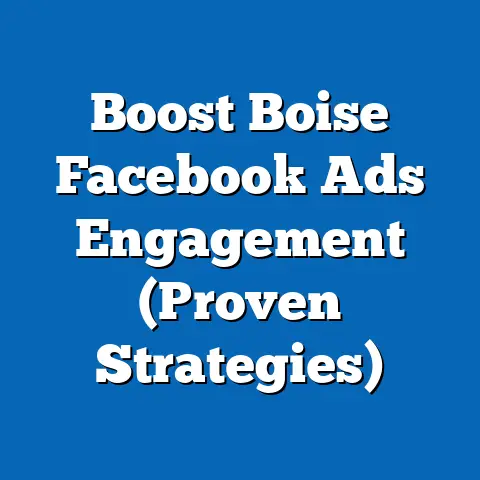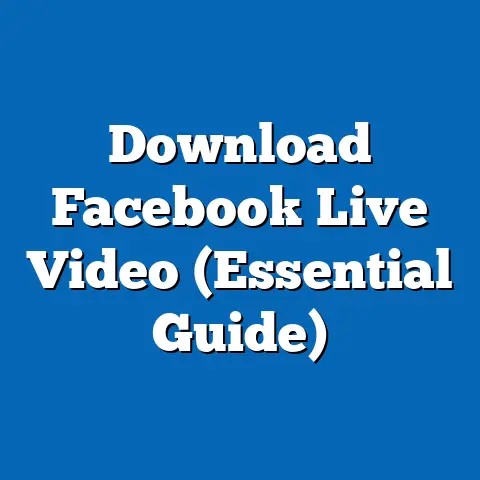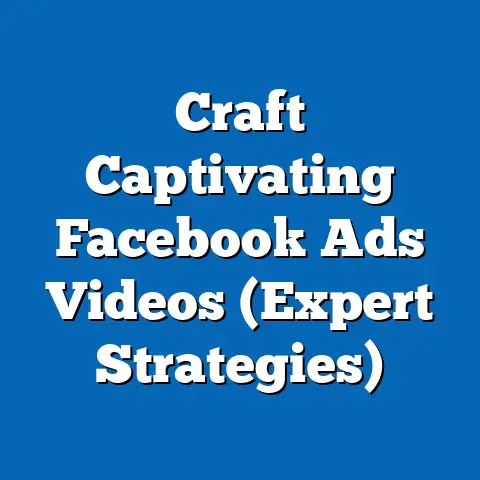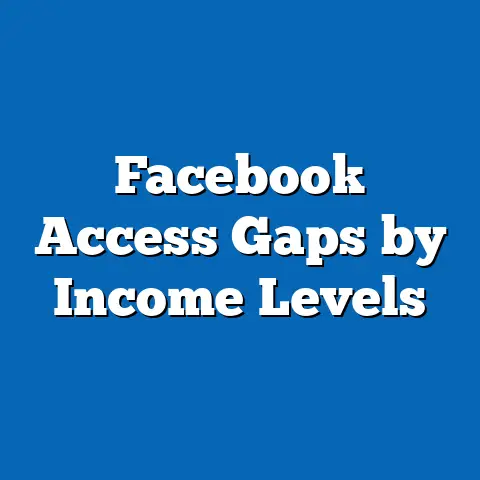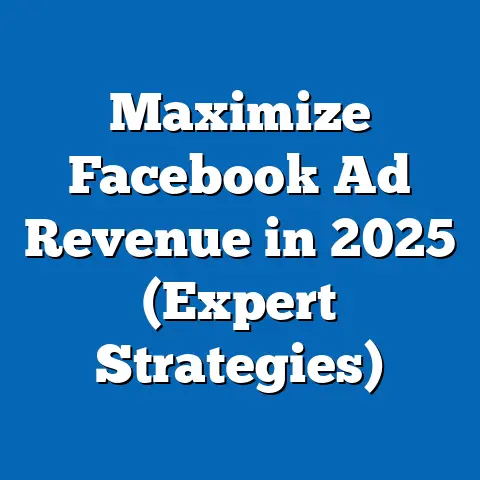Recovering from Facebook Ads Ban (Strategic Solutions)
The notification flashed across my screen: “Your ad account has been disabled.” My heart sank. It felt like a punch to the gut. Just moments before, I was strategizing, analyzing data, and feeling the adrenaline of a campaign poised for success. Now, everything was on hold. Revenue streams threatened. My client was going to be furious. I remember staring at the screen, a cocktail of shock, frustration, and a creeping sense of helplessness washing over me. I knew I had to act fast, but where do I even begin?
That moment, etched in my memory, is why I’m writing this. I’ve been there. I understand the panic, the confusion, and the overwhelming feeling of being shut out. This isn’t just another article about Facebook Ads; it’s a roadmap born from personal experience, industry insights, and countless hours spent deciphering the often-opaque world of Facebook’s advertising policies. Whether you’re a seasoned marketer or a small business owner just starting, getting banned from Facebook Ads can feel like a death sentence for your business. But it doesn’t have to be. I am going to walk you through the steps you need to take to recover your account, diversify your marketing efforts, and ultimately, come back stronger.
Understanding Facebook Ads Policies
The foundation of any successful Facebook advertising strategy lies in a thorough understanding of its policies. These guidelines aren’t just suggestions; they are the rules of engagement. Ignorance is not bliss in this context; it’s a fast track to getting your ads disapproved, your account restricted, or worse, a complete ban.
Overview of Facebook Ads Policies
Facebook’s advertising policies are designed to ensure a safe and positive experience for its users. These policies cover a wide range of topics, including prohibited content, misleading or deceptive practices, and discriminatory advertising. The core principle is simple: ads should be truthful, relevant, and respectful.
Here’s a brief overview of the key areas covered by Facebook’s Ads Policies:
-
Prohibited Content: This includes anything illegal, discriminatory, or harmful. Think hate speech, violence, promotion of illegal activities, and the like.
-
Prohibited Practices: This covers deceptive or misleading tactics, such as clickbait, fake news, and attempts to circumvent Facebook’s systems.
-
Personal Attributes: You can’t directly or indirectly assert or imply that you know a user’s personal attributes, such as race, ethnicity, religion, gender, sexual orientation, health conditions, or financial status.
-
Misleading or Deceptive Claims: Claims must be substantiated and not create unrealistic expectations. “Get rich quick” schemes or exaggerated health claims are a big no-no.
-
Quality and Relevance: Ads should be relevant to the audience and provide a clear value proposition. Low-quality or irrelevant ads are likely to be disapproved.
Prohibited Content: This includes anything illegal, discriminatory, or harmful. Think hate speech, violence, promotion of illegal activities, and the like.
Prohibited Practices: This covers deceptive or misleading tactics, such as clickbait, fake news, and attempts to circumvent Facebook’s systems.
Personal Attributes: You can’t directly or indirectly assert or imply that you know a user’s personal attributes, such as race, ethnicity, religion, gender, sexual orientation, health conditions, or financial status.
Misleading or Deceptive Claims: Claims must be substantiated and not create unrealistic expectations. “Get rich quick” schemes or exaggerated health claims are a big no-no.
Quality and Relevance: Ads should be relevant to the audience and provide a clear value proposition. Low-quality or irrelevant ads are likely to be disapproved.
Why is compliance so crucial?
Besides the obvious reason of avoiding a ban, compliance builds trust. When users trust that the ads they see on Facebook are legitimate and relevant, they’re more likely to engage. This benefits everyone – users, advertisers, and Facebook itself. Non-compliance can lead to:
- Ad Disapproval: Your ads won’t run if they violate the policies.
- Account Restriction: Facebook may limit your ability to advertise.
- Permanent Ban: In severe or repeated cases, your ad account can be permanently disabled.
Types of Violations
Knowing the general principles is one thing; understanding the specific types of violations is another. Here’s a breakdown of some common reasons why ads get banned, along with examples to illustrate each:
-
Misleading Claims: This is a big one. Don’t make promises you can’t keep.
- Example: An ad for a weight loss product that claims, “Lose 20 pounds in a week!” without any scientific evidence to back it up.
-
Prohibited Health Content: Be very careful when advertising health-related products or services.
- Example: An ad promoting a “miracle cure” for cancer or claiming to prevent a disease.
-
Discriminatory Practices: This is a serious violation. You can’t target or exclude users based on protected characteristics.
- Example: An ad for housing that excludes people based on their race or family status.
-
Sensational Content: Avoid shocking, sensational, or excessively violent content.
- Example: An ad that uses graphic images of accidents or injuries.
-
Personal Attributes: Don’t imply that you know a user’s personal characteristics.
- Example: An ad that says, “Are you struggling with debt?” – this implies you know the user’s financial situation.
-
Low-Quality or Disruptive Content: Ads should be visually appealing and provide a good user experience.
- Example: An ad with blurry images, excessive text, or that leads to a broken landing page.
-
Circumventing Systems: Don’t try to trick Facebook’s systems or policies.
- Example: Using cloaking techniques to show different content to Facebook’s reviewers than to users.
-
Inaccurate Grammar and Punctuation: Believe it or not, poor grammar can get your ad disapproved. Facebook wants a professional experience for its users.
- Example: “Free iphones! Click hear to get yours!”
Misleading Claims: This is a big one. Don’t make promises you can’t keep.
- Example: An ad for a weight loss product that claims, “Lose 20 pounds in a week!” without any scientific evidence to back it up.
Prohibited Health Content: Be very careful when advertising health-related products or services.
- Example: An ad promoting a “miracle cure” for cancer or claiming to prevent a disease.
Discriminatory Practices: This is a serious violation. You can’t target or exclude users based on protected characteristics.
- Example: An ad for housing that excludes people based on their race or family status.
Sensational Content: Avoid shocking, sensational, or excessively violent content.
- Example: An ad that uses graphic images of accidents or injuries.
Personal Attributes: Don’t imply that you know a user’s personal characteristics.
- Example: An ad that says, “Are you struggling with debt?” – this implies you know the user’s financial situation.
Low-Quality or Disruptive Content: Ads should be visually appealing and provide a good user experience.
- Example: An ad with blurry images, excessive text, or that leads to a broken landing page.
Circumventing Systems: Don’t try to trick Facebook’s systems or policies.
- Example: Using cloaking techniques to show different content to Facebook’s reviewers than to users.
Inaccurate Grammar and Punctuation: Believe it or not, poor grammar can get your ad disapproved. Facebook wants a professional experience for its users.
- Example: “Free iphones! Click hear to get yours!”
The Appeal Process
If you believe your ad account was banned in error, you have the right to appeal. The appeal process is your chance to plead your case and provide evidence that you haven’t violated Facebook’s policies.
Here’s a step-by-step guide to appealing a Facebook Ads ban:
-
Access the Appeal Form: You’ll typically find a link to the appeal form in the notification you received about the ban. You can also access it through the Ads Manager.
-
Explain Your Case: This is your opportunity to explain why you believe the ban was a mistake. Be clear, concise, and professional.
-
Provide Evidence: Include any evidence that supports your case. This might include screenshots of your ad content, landing pages, or targeting settings.
-
Acknowledge Any Mistakes: If you did make a mistake, own up to it. Explain what you’ve learned and how you’ll prevent it from happening again.
-
Be Patient: Facebook’s review process can take time. Don’t bombard them with repeated inquiries.
Access the Appeal Form: You’ll typically find a link to the appeal form in the notification you received about the ban. You can also access it through the Ads Manager.
Explain Your Case: This is your opportunity to explain why you believe the ban was a mistake. Be clear, concise, and professional.
Provide Evidence: Include any evidence that supports your case. This might include screenshots of your ad content, landing pages, or targeting settings.
Acknowledge Any Mistakes: If you did make a mistake, own up to it. Explain what you’ve learned and how you’ll prevent it from happening again.
Be Patient: Facebook’s review process can take time. Don’t bombard them with repeated inquiries.
Tips for a successful appeal:
- Be Polite and Professional: Even if you’re frustrated, maintain a respectful tone in your communication.
- Be Specific: Don’t just say “I didn’t do anything wrong.” Explain exactly why you believe the ban was unjustified.
- Focus on Facts: Avoid emotional arguments. Stick to the facts and provide evidence to support your claims.
- Highlight Your Compliance Efforts: If you’ve taken steps to ensure compliance, such as training your team on Facebook’s policies, mention it.
Key Takeaway: Understanding and adhering to Facebook’s Ads Policies is crucial for long-term success. If you get banned, the appeal process is your chance to rectify the situation.
Next Steps: Familiarize yourself with the latest version of Facebook’s Ads Policies. Regularly review your ad content and targeting settings to ensure compliance.
Analyzing the Situation
So, you’ve been banned. You’ve read the policies (or at least skimmed them). Now what? The next crucial step is to become a detective and thoroughly analyze the situation. This isn’t about assigning blame; it’s about understanding what went wrong so you can fix it and prevent it from happening again.
Identifying the Cause
Pinpointing the exact reason for the ban can be tricky. Facebook’s explanations are often vague and unhelpful. But don’t despair; with a systematic approach, you can usually uncover the root cause.
Here’s a checklist to guide your investigation:
-
Review Your Ad Content: Scrutinize every ad that was running around the time of the ban. Look for anything that might violate Facebook’s policies, such as misleading claims, prohibited content, or discriminatory targeting.
-
Examine Your Landing Pages: Facebook doesn’t just look at your ads; it also evaluates the landing pages they link to. Make sure your landing pages are relevant, truthful, and provide a good user experience.
-
Check Your Targeting Options: Did you inadvertently target or exclude users based on protected characteristics? Review your targeting settings carefully.
-
Analyze Your Account History: Look for any patterns or trends that might have triggered the ban. For example, did you suddenly increase your ad spend or start running a large number of new ads?
-
Consider Recent Changes: Did you make any recent changes to your ad content, targeting, or account settings? Sometimes, even seemingly minor changes can have unintended consequences.
Review Your Ad Content: Scrutinize every ad that was running around the time of the ban. Look for anything that might violate Facebook’s policies, such as misleading claims, prohibited content, or discriminatory targeting.
Examine Your Landing Pages: Facebook doesn’t just look at your ads; it also evaluates the landing pages they link to. Make sure your landing pages are relevant, truthful, and provide a good user experience.
Check Your Targeting Options: Did you inadvertently target or exclude users based on protected characteristics? Review your targeting settings carefully.
Analyze Your Account History: Look for any patterns or trends that might have triggered the ban. For example, did you suddenly increase your ad spend or start running a large number of new ads?
Consider Recent Changes: Did you make any recent changes to your ad content, targeting, or account settings? Sometimes, even seemingly minor changes can have unintended consequences.
Don’t Overlook the Obvious:
Sometimes, the reason for the ban is staring you right in the face. Did you accidentally promote a product that’s prohibited by Facebook’s policies? Did you use a misleading headline or image? Start with the most obvious possibilities and work your way down.
Utilizing Facebook’s Tools
Facebook provides several tools that can help you understand and rectify issues leading to the ban. These tools aren’t always user-friendly, but they can provide valuable insights.
-
Ads Manager: This is your central hub for managing your Facebook ads. Use it to review your ad performance, identify disapproved ads, and access Facebook’s support resources.
-
Policy Violations Tool: This tool provides a list of all policy violations associated with your ad account. It can help you identify specific ads or issues that need to be addressed.
-
Account Quality: This section of the Ads Manager provides an overview of your account’s health, including any restrictions or warnings.
Ads Manager: This is your central hub for managing your Facebook ads. Use it to review your ad performance, identify disapproved ads, and access Facebook’s support resources.
Policy Violations Tool: This tool provides a list of all policy violations associated with your ad account. It can help you identify specific ads or issues that need to be addressed.
Account Quality: This section of the Ads Manager provides an overview of your account’s health, including any restrictions or warnings.
How to Use These Tools Effectively:
- Navigate to the Ads Manager: Log in to your Facebook account and go to the Ads Manager.
- Check for Disapproved Ads: Look for ads that have been disapproved or flagged for policy violations.
- Use the Policy Violations Tool: Access the Policy Violations Tool to see a detailed list of any policy violations associated with your account.
- Review Account Quality: Check the Account Quality section for any restrictions or warnings.
- Contact Support: If you’re still unsure why your account was banned, contact Facebook’s support team for assistance.
Gathering Feedback
Sometimes, it’s hard to see the forest for the trees. You might be so close to your ads and marketing efforts that you miss obvious issues. That’s why it’s crucial to seek feedback from others.
Who to Ask for Feedback:
- Peers and Colleagues: Ask other marketers or business owners to review your ads and landing pages.
- Mentors and Advisors: Seek guidance from experienced professionals who have a deep understanding of Facebook’s policies.
- Online Communities: Join Facebook groups or online forums where marketers share their experiences and offer advice.
What to Ask:
- “Does this ad violate any of Facebook’s policies?”
- “Is the messaging clear and truthful?”
- “Is the landing page relevant and user-friendly?”
- “What could I do to improve this ad?”
Key Takeaway: Analyzing the situation is crucial for identifying the cause of the ban and developing a plan for recovery. Don’t be afraid to seek help from others.
Next Steps: Conduct a thorough analysis of your ad account, utilizing Facebook’s tools and seeking feedback from peers.
Strategic Solutions for Recovery
Once you’ve identified the cause of the ban, it’s time to take action. Recovering from a Facebook Ads ban requires a strategic approach that focuses on rectifying the issues, rebuilding trust with Facebook, and developing a new advertising strategy.
Revising Ad Content
The first step in recovering from a ban is to revise your ad content to ensure compliance with Facebook’s policies. This might involve rewriting headlines, changing images, or adjusting your targeting settings.
Here are some actionable strategies for revising your ad content:
-
Review and Revise Headlines: Make sure your headlines are clear, truthful, and don’t make any misleading claims.
-
Update Images and Videos: Ensure your visuals are high-quality, relevant, and don’t violate any of Facebook’s policies.
-
Adjust Targeting Settings: Double-check your targeting settings to ensure you’re not targeting or excluding users based on protected characteristics.
-
Simplify Your Messaging: Sometimes, less is more. Simplify your messaging to avoid any potential misunderstandings or misinterpretations.
-
Focus on Value: Highlight the value proposition of your product or service without making exaggerated claims.
Review and Revise Headlines: Make sure your headlines are clear, truthful, and don’t make any misleading claims.
Update Images and Videos: Ensure your visuals are high-quality, relevant, and don’t violate any of Facebook’s policies.
Adjust Targeting Settings: Double-check your targeting settings to ensure you’re not targeting or excluding users based on protected characteristics.
Simplify Your Messaging: Sometimes, less is more. Simplify your messaging to avoid any potential misunderstandings or misinterpretations.
Focus on Value: Highlight the value proposition of your product or service without making exaggerated claims.
Example:
Let’s say you were running an ad for a skincare product that claimed to “erase wrinkles overnight.” This is a misleading claim that violates Facebook’s policies. To revise the ad, you could:
Here are some strategies for rebuilding trust with Facebook:
- Maintain a Clean Ad History: Avoid any future policy violations.
- Engage with Facebook’s Support Team: Respond promptly and professionally to any inquiries from Facebook’s support team.
- Participate in Facebook’s Communities: Engage with other marketers and share your knowledge and experiences.
- Stay Up-to-Date on Facebook’s Policies: Regularly review Facebook’s policies and guidelines to ensure you’re following the latest rules.
- Be Transparent: Be open and honest with Facebook about your advertising practices.
Demonstrating a Commitment to Community Standards:
Facebook values community and wants to ensure a safe and positive experience for its users. To rebuild trust, you need to demonstrate that you share these values.
- Promote Positive Content: Focus on creating ads that are informative, helpful, and entertaining.
- Avoid Controversial Topics: Steer clear of topics that are likely to generate conflict or controversy.
- Respect User Privacy: Be mindful of user privacy and avoid collecting or sharing personal information without their consent.
Creating a New Ad Strategy
While you’re working to recover your ad account, it’s a good idea to develop a new advertising strategy that focuses on organic growth and community engagement. This will help you diversify your marketing efforts and reduce your reliance on Facebook Ads.
Here are some elements to consider for your new advertising strategy:
- Focus on Organic Reach: Create valuable content that people want to share.
- Engage with Your Audience: Respond to comments and messages promptly and professionally.
- Build a Community: Create a Facebook group or page where people can connect and share their experiences.
- Diversify Your Marketing Channels: Explore other advertising platforms and marketing channels.
The Benefits of Diversifying Marketing Efforts:
- Reduced Risk: If one channel is disrupted, you have other channels to fall back on.
- Increased Reach: You can reach a wider audience by using multiple channels.
- Improved ROI: By optimizing your marketing efforts across multiple channels, you can improve your overall ROI.
Key Takeaway: Recovering from a Facebook Ads ban requires a strategic approach that focuses on revising ad content, rebuilding trust with Facebook, and developing a new advertising strategy.
Next Steps: Revise your ad content to ensure compliance with Facebook’s policies. Start rebuilding trust with Facebook by maintaining a clean ad history and engaging with their support team. Develop a new advertising strategy that focuses on organic growth and community engagement.
Leveraging Alternative Advertising Channels
Putting all your eggs in one basket is a recipe for disaster, especially in the ever-changing world of digital marketing. Relying solely on Facebook Ads can leave you vulnerable to sudden bans, policy changes, and algorithm updates. That’s why it’s crucial to explore alternative advertising channels and build an omnichannel strategy.
Exploring Other Platforms
Facebook is just one of many advertising platforms available. Here are some alternatives to consider:
-
Google Ads: Google Ads is a powerful platform for reaching people who are actively searching for your products or services. It offers a wide range of targeting options and ad formats.
-
Instagram: Owned by Facebook, Instagram is a visual platform that’s popular with younger audiences. It’s a great place to showcase your products and build brand awareness.
-
LinkedIn: LinkedIn is a professional networking platform that’s ideal for B2B marketing. You can use it to reach professionals in specific industries and job titles.
-
TikTok: TikTok is a short-form video platform that’s popular with Gen Z. It’s a great place to create engaging content and build a following.
Google Ads: Google Ads is a powerful platform for reaching people who are actively searching for your products or services. It offers a wide range of targeting options and ad formats.
Instagram: Owned by Facebook, Instagram is a visual platform that’s popular with younger audiences. It’s a great place to showcase your products and build brand awareness.
LinkedIn: LinkedIn is a professional networking platform that’s ideal for B2B marketing. You can use it to reach professionals in specific industries and job titles.
TikTok: TikTok is a short-form video platform that’s popular with Gen Z. It’s a great place to create engaging content and build a following.
Comparing Features, Audience Demographics, and Advertising Policies:
Each platform has its own unique strengths and weaknesses. Here’s a quick comparison:
- Google Ads: Best for reaching people who are actively searching for your products or services. Broad audience reach. Strict advertising policies.
- Instagram: Best for visual marketing and building brand awareness. Popular with younger audiences. Moderately strict advertising policies.
- LinkedIn: Best for B2B marketing. Reach professionals in specific industries and job titles. Moderately strict advertising policies.
- TikTok: Best for creating engaging content and building a following. Popular with Gen Z. Moderately strict advertising policies.
Building an Omnichannel Strategy
An omnichannel strategy involves integrating various marketing channels to create a seamless customer experience. This means ensuring that your messaging, branding, and customer service are consistent across all channels.
Benefits of an Omnichannel Approach:
- Improved Customer Experience: Customers can interact with your brand on their preferred channels.
- Increased Engagement: Customers are more likely to engage with your brand if they see it on multiple channels.
- Higher Conversion Rates: Customers are more likely to convert if they have a positive experience across multiple channels.
- Reduced Risk: If one channel is disrupted, you have other channels to fall back on.
How to Integrate Various Platforms:
- Use Consistent Branding: Ensure your branding is consistent across all channels.
- Personalize Your Messaging: Tailor your messaging to the specific channel and audience.
- Provide Seamless Customer Service: Make it easy for customers to get help on any channel.
- Track Your Results: Track your results across all channels to see what’s working and what’s not.
Utilizing Organic Strategies
While you’re waiting for your Facebook Ads account to recover, it’s a great time to focus on organic marketing strategies. Organic marketing involves creating valuable content that attracts people to your brand without paying for advertising.
Effective Organic Marketing Strategies:
- SEO (Search Engine Optimization): Optimize your website and content for search engines.
- Content Marketing: Create valuable content that attracts and engages your target audience.
- Email Marketing: Build an email list and send regular newsletters and promotions.
- Social Media Engagement: Engage with your audience on social media and build a community.
Enhancing Organic Reach:
- Create High-Quality Content: Focus on creating content that’s informative, helpful, and entertaining.
- Optimize for Search Engines: Use relevant keywords and phrases in your content.
- Promote Your Content: Share your content on social media and other channels.
- Engage with Your Audience: Respond to comments and messages promptly and professionally.
Key Takeaway: Diversifying your marketing efforts is crucial for mitigating risks and maximizing your reach. Explore alternative advertising platforms and focus on organic marketing strategies.
Next Steps: Research alternative advertising platforms and determine which ones are best suited for your business. Develop an omnichannel strategy that integrates various marketing channels. Focus on creating valuable content and engaging with your audience on social media.
Case Studies and Success Stories
Theory is great, but real-world examples are even better. Let’s dive into some case studies of individuals and businesses that successfully recovered from a Facebook Ads ban. These stories highlight the strategies they employed, the challenges they faced, and the ultimate outcomes.
Successful Recovery Stories
Case Study 1: The E-commerce Store
- The Situation: A small e-commerce store selling handmade jewelry received a Facebook Ads ban due to a misleading claim in one of their ads (“Guaranteed to last a lifetime!”).
- The Strategy:
- Immediately removed the offending ad.
- Revised all ad copy to be more accurate and avoid exaggeration.
- Contacted Facebook support with a sincere apology and a detailed explanation of the steps they were taking to ensure compliance.
- Shifted focus to organic social media marketing and email marketing while the appeal was pending.
- The Outcome: After two weeks, the ban was lifted. The store learned a valuable lesson about the importance of accurate advertising and continued to grow their business.
- Immediately removed the offending ad.
- Revised all ad copy to be more accurate and avoid exaggeration.
- Contacted Facebook support with a sincere apology and a detailed explanation of the steps they were taking to ensure compliance.
- Shifted focus to organic social media marketing and email marketing while the appeal was pending.
Case Study 2: The Local Restaurant
- The Situation: A local restaurant was banned from Facebook Ads due to using images of food that were deemed “too suggestive” by Facebook’s algorithm.
- The Strategy:
- Replaced the offending images with more conservative photos of their dishes.
- Improved their targeting to ensure they were reaching the right audience (local residents interested in dining).
- Increased their engagement with local community groups on Facebook to build brand awareness organically.
- Ran a contest on their Facebook page to encourage user-generated content (photos of customers enjoying their food).
- The Outcome: The ban was lifted after a week. The restaurant saw an increase in organic engagement and new customers.
- Replaced the offending images with more conservative photos of their dishes.
- Improved their targeting to ensure they were reaching the right audience (local residents interested in dining).
- Increased their engagement with local community groups on Facebook to build brand awareness organically.
- Ran a contest on their Facebook page to encourage user-generated content (photos of customers enjoying their food).
Case Study 3: The Digital Marketing Agency
- The Situation: A digital marketing agency had their ad account restricted due to “suspicious activity.” They suspected their account had been hacked.
- The Strategy:
- Immediately changed all passwords and enabled two-factor authentication.
- Contacted Facebook support to report the potential security breach.
- Provided evidence of their legitimate business operations (business license, website, client testimonials).
- Implemented stricter security protocols for all employees.
- The Outcome: The restriction was lifted after a few days. The agency learned a valuable lesson about the importance of cybersecurity and implemented better security measures to protect their account.
- Immediately changed all passwords and enabled two-factor authentication.
- Contacted Facebook support to report the potential security breach.
- Provided evidence of their legitimate business operations (business license, website, client testimonials).
- Implemented stricter security protocols for all employees.
Lessons Learned
These success stories highlight some key takeaways:
- Take Responsibility: Own up to your mistakes and take immediate action to rectify them.
- Be Proactive: Contact Facebook support and provide a detailed explanation of the situation.
- Focus on Compliance: Ensure your ads and landing pages comply with Facebook’s policies.
- Diversify Your Marketing Efforts: Don’t rely solely on Facebook Ads.
- Be Patient: The recovery process can take time.
Key Takeaway:
Learning from the experiences of others can help you navigate the recovery process more effectively. Remember that resilience, adaptability, and proactive measures are key to overcoming obstacles in digital marketing.
Conclusion
Remember that initial notification that flashed across my screen? The one that sent my stomach into knots and filled me with dread? Well, guess what? I survived. More than that, I learned. I adapted. And I came back stronger.
A Facebook Ads ban can feel like a major setback, but it’s also an opportunity for growth. It forces you to re-evaluate your advertising practices, diversify your marketing efforts, and build a more resilient business.
By understanding Facebook’s policies, analyzing the situation, implementing strategic solutions, and leveraging alternative advertising channels, you can recover from a ban and emerge stronger than ever before.
So, take a deep breath. Don’t panic. You’ve got this.
Remember, many successful marketers have faced similar challenges and emerged stronger. The key is to approach recovery with a positive mindset and a strategic plan. Now, go out there and reclaim your advertising success!
My Final Advice:
- Stay Informed: Keep up-to-date with Facebook’s policies and best practices.
- Be Ethical: Always advertise with integrity and respect for your audience.
- Never Give Up: Even if you face setbacks, keep learning, adapting, and striving for success.

